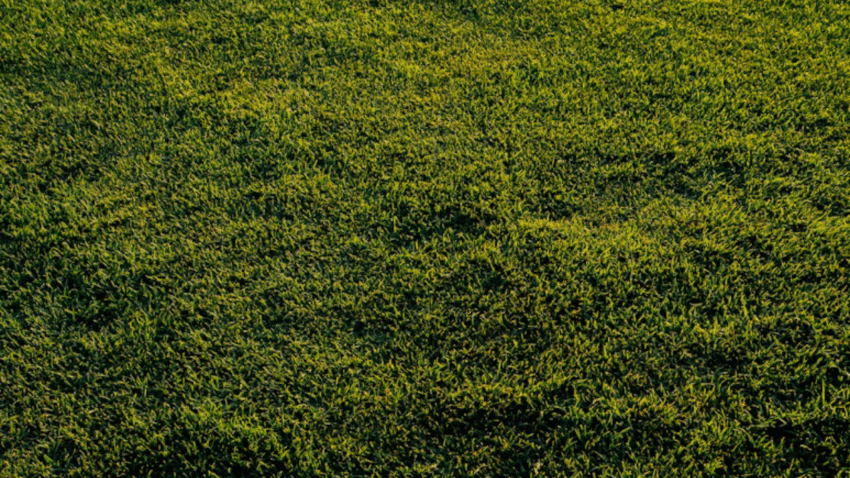Introduction
Ever noticed yellow or brown streaks on your lawn after fertilizing? That’s likely fertilizer burn — a common but preventable mistake that can damage your grass and leave unsightly patches. Learning how to prevent fertilizer burn on grass will help you feed your lawn properly, keep your turf healthy, and avoid wasting time and money on repairs. This complete step-by-step guide will show you how to fertilize the right way, protect your grass roots, and keep your lawn lush and green.
Why Preventing Fertilizer Burn Matters for a Healthy Lawn
Fertilizer burn happens when too much nitrogen or salt from fertilizer builds up in the soil. This pulls moisture out of grass blades and roots, leaving dry, scorched spots behind. It’s most common with synthetic, quick-release fertilizers and in hot, dry weather when grass is already stressed.
Preventing burn not only protects your lawn’s appearance — it also helps keep the soil healthy, reduces chemical runoff, and saves you money on unnecessary repairs. With the right approach, you can feed your lawn exactly what it needs, when it needs it, without risking damage.
Step-by-Step Guide to Preventing Fertilizer Burn
Follow these practical steps to fertilize safely and effectively:
1. Test Your Soil First
Before you fertilize, get a soil test to understand what nutrients your lawn actually needs. Many homeowners over-fertilize without realizing it. A test can help you choose the right product and avoid excess nitrogen that causes burn.
2. Choose the Right Fertilizer
Pick a slow-release or controlled-release fertilizer instead of quick-release versions. Slow-release products feed your lawn gradually over time, lowering the risk of burning.
If you’re new to fertilizing, choose an organic or natural fertilizer. These are less likely to burn your lawn because they’re lower in salt content and release nutrients more gently.
3. Follow the Label Instructions Carefully
Always read and follow the manufacturer’s guidelines for application rates. Using more than the recommended amount won’t make your grass greener — it just increases the chance of fertilizer burn.
Use a measuring cup or scoop to apply the correct amount, and keep your spreader properly calibrated.
4. Use a Quality Spreader
For granular fertilizers, use a broadcast or drop spreader rather than applying by hand. Spreaders help distribute fertilizer evenly, preventing accidental piles that burn grass.
Overlap slightly as you move across the lawn to avoid missed strips but be careful not to double-apply.
5. Water Before and After Application
A few days before fertilizing, water your lawn thoroughly so your soil is moist — but not soggy — which helps nutrients absorb evenly.
After applying granular fertilizer, lightly water your lawn again to wash fertilizer off the grass blades and into the soil. This reduces salt buildup that can scorch your turf.
6. Never Fertilize Dry or Stressed Grass
Avoid fertilizing during heat waves, drought, or when your lawn is already brown and dormant. Stressed grass is much more susceptible to burn. Wait until the weather is mild, or your grass is actively growing and well-watered.
7. Avoid Overlapping or Spilling
Take care around edges and near flower beds, sidewalks, and driveways. Use a drop spreader for precision along borders. Sweep up any excess fertilizer from hard surfaces to prevent runoff into waterways and reduce waste.
8. Apply Fertilizer at the Right Time
Timing is key. Fertilize when your grass type is actively growing:
- Cool-season grasses (fescue, bluegrass, ryegrass): Fertilize in spring and fall.
- Warm-season grasses (Bermuda, zoysia, St. Augustine): Fertilize in late spring through summer.
Never fertilize before heavy rain, as nutrients can wash away, and runoff can damage surrounding areas.
Common Mistakes to Avoid
Mistake 1: Using Too Much Fertilizer
Solution: More isn’t better. Always measure and apply the recommended amount.
Mistake 2: Fertilizing in Extreme Heat
Solution: Wait for cooler temperatures when your grass is actively growing.
Mistake 3: Skipping Watering
Solution: Water before and after fertilizing to help nutrients absorb and wash residue off blades.
Mistake 4: Using the Wrong Spreader Setting
Solution: Calibrate your spreader each season and double-check the setting for your chosen product.
Mistake 5: Not Cleaning Up Spills
Solution: Sweep excess fertilizer off sidewalks and driveways to prevent accidental overapplication and runoff.
Extra Lawn Care Tips & Hacks
✅ Use Organic Lawn Food: Natural fertilizers like compost, manure, or organic lawn blends feed grass slowly and safely with less risk of burn.
✅ Split Applications: If you’re unsure, apply half the recommended amount now and the other half in a few weeks to avoid overloading your soil.
✅ Mulch Clippings: Grass clippings return nitrogen to your lawn naturally, so you may need less fertilizer overall.
👉 Check out our guide on “How to Top Dress Your Lawn With Compost” for a natural boost that won’t burn your grass!
Conclusion
Fertilizing is essential for a healthy, vibrant lawn — but only if you do it right. Knowing how to prevent fertilizer burn on grass will help you feed your turf just the right amount, avoid costly damage, and enjoy lush, green results season after season.
Bookmark this guide, test your soil, and follow these simple steps. With a little care and consistency, you’ll keep your lawn nourished, strong, and burn-free all year long.
